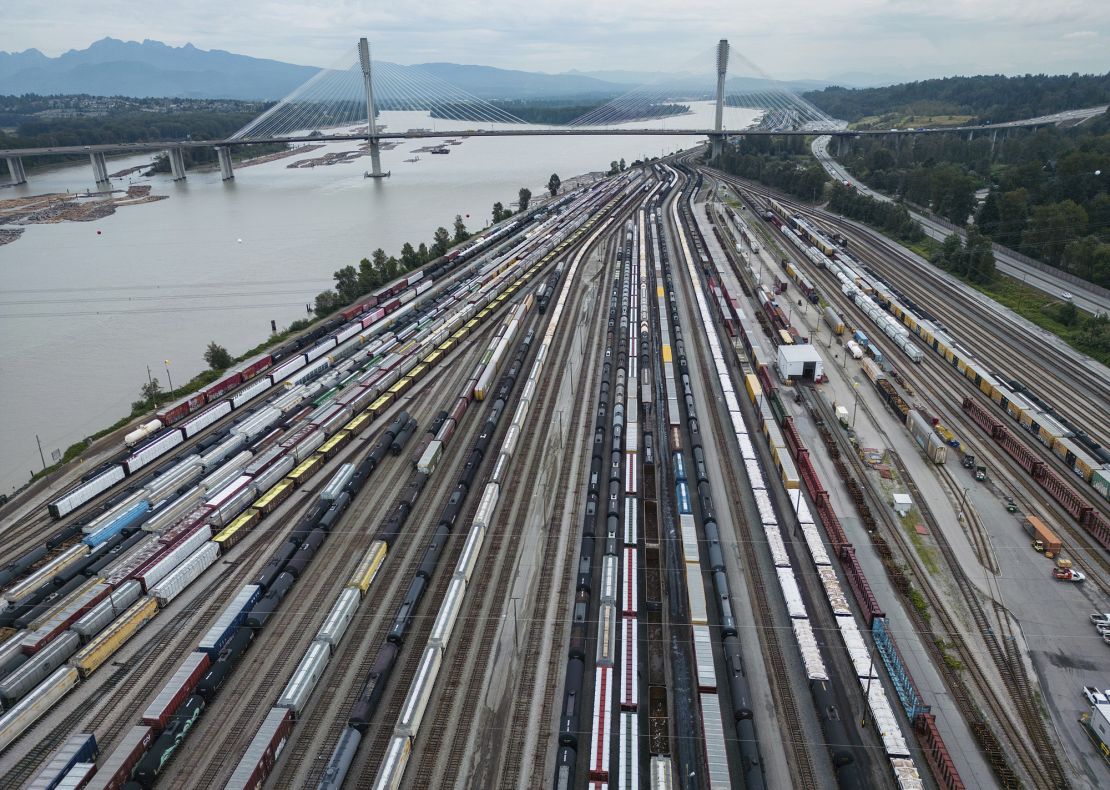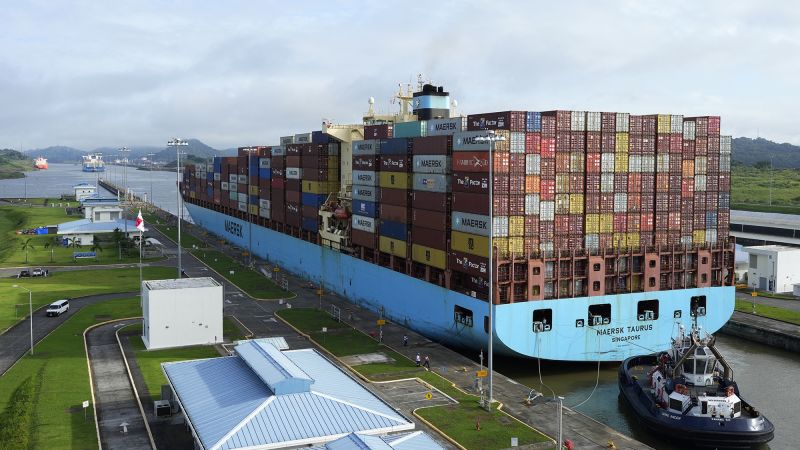Global supply chains, now a couple years recovered from pandemic-era snarls, have been chugging along at a much healthier clip.
But by no means has it been smooth sailing.
Traffic through two critical international shipping arteries has been bogged down dramatically: The Suez Canal, due to Houthi militants’ monthslong attacks on vessels; and the Panama Canal, due to a historic drought.
In addition to the brewing uncertainty from ongoing wars and geopolitical strife, other perils have popped up like a game of Whac-A-Mole: The Key Bridge’s devastating and deadly collapse that closed the Port of Baltimore for two months; a Canadian rail labor dispute that temporarily brought trains to a standstill and still remains unsettled; and a looming September 30 contract expiration that, if not extended, could send dockworkers on the East and Gulf coasts to the picket lines.
The emerging threats, lengthier shipping routes or spiking container costs might stoke concerns of another 2021-style supply chain breakdown that disrupted businesses globally and helped to ignite decades-high inflation. But economists and shipping experts say this time it’s different — in good part because of what happened three years ago.
“The upside of the havoc wrought by supply chain disruption in recent years is that global supply chains today are far more resilient than they were even a decade ago,” Tim Quinlan, managing director and senior economist at Wells Fargo, told CNN. “The combination of onshoring and nearshoring play a big role but so too does this diversification of suppliers.”
Shipping companies, manufacturers and merchants have been able to adapt to the uncertainty landscape, opting to divert vessels to lengthier routes, placing orders earlier than usual, storing more inventory than they typically would, and absorbing most of the added costs that come with those decisions, he said.
“As long as we do not have too many of these flare-ups simultaneously, the hard-learned lessons of the past four years have created some savvy purchasing managers and procurement professionals,” he said.
Those prudent procurement professionals likely mean that the holiday shopping season shouldn’t come with many out-of-stocks.
Monthly import cargo volume has been running at near-record highs for the past several months, according to the National Retail Federation and Hackett Associates, which compile a monthly Global Port Tracker report.
“Retailers are concerned by the possibility of a strike at ports on the East and Gulf coasts because contract talks have stalled,” Jonathan Gold, the NRF’s vice president for supply chain and customs policy, said in a statement. “Many retailers have taken precautions including earlier shipping and shifting cargo to West Coast ports.”
The increased shipping activity also could reflect retailers and manufacturers getting ahead of an expected increase in tariffs, Michael Skordeles, head of US economics for Truist, told CNN. However, he added, another driver for heavier levels of shipments is the ongoing heavier strength ofthe US consumer, he said.
Retail sales were up a far-stronger-than-expected 1% in July and overall consumer spending bested expectations as well, running 0.5% over June, according to recent Commerce Department data.
Despite the July spending spree — likely a reflection of Amazon Prime Day and competing sales as well as auto dealerships coming back online after a major software disruption — overall goods spending hasn’t been gangbusters, Skordeles said. And even though that could mean a relatively muted holiday season, retailers don’t want to get caught short-handed, he noted.
“There’s a lot of scar tissue there from [retailers and manufacturers] getting stung during the pandemic,” Skordeles said. “I think retailers and manufacturers are probably running a little heavy [with their inventory levels] relative to where they’ve been a year or two ago. But I think they’re OK with it.”
Longer routes, fewer ships and earlier orders come with heftier costs. And after three-plus years of prices rising much faster than normal, inflation fears persist.
Container prices are running about 150% higher than this time last year, Wells Fargo’s Quinlan said.
However, unlike in recent years, manufacturers and retailers are finding it much more difficult to pass along higher shipping costs to consumers, he said.
“In 2021 and 2022, you could almost get away with putting a ‘supply chain surcharge’ on the cost of your merchandise, and consumers were so excited about taking their mask off and going out into the world that they didn’t care,” Quinlan said. “Today’s environment is characterized by a much more discerning consumer.”
“Diminished pricing power is an understatement,” he added. “I think no pricing power is more like it.”

Container prices have come down after spiking in July due to higher demand and limited capacity due to the lengthier routes. The expectation is for prices and activity to continue to normalize in the months ahead, Ryan Petersen, CEO of Flexport, said in an interview.
“I think the worst of it is behind us,” he said. “I’m not predicting the Red Sea [fully] reopens, but I think that, regardless, there’s going to be enough ships to have enough capacity to meet the demand and we don’t see the huge demand spikes that we saw before.”
Still, if the US Maritime Alliance and the International Longshoremen’s Association unions on the East and Gulf coasts are unable to reach an agreement on a new or extended contract, a port shutdown would be “devastating,” Petersen said, noting other ports would be completely backlogged.
However, Petersen noted that he’s optimistic a strike could be averted.
“That is one month before the US presidential election,” he said. “I’m not a political analyst by any means, but it’d be hard for me to imagine that the Biden administration wouldn’t step in.”
Read the full article here




